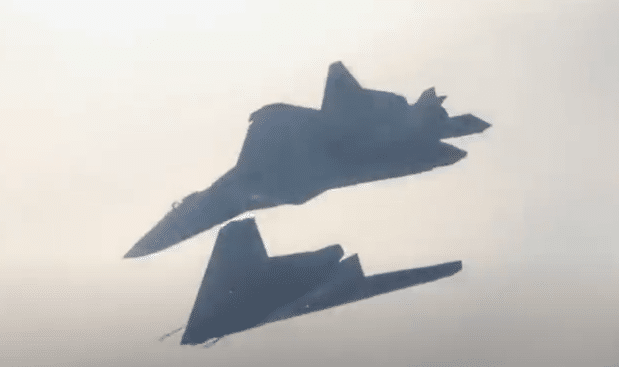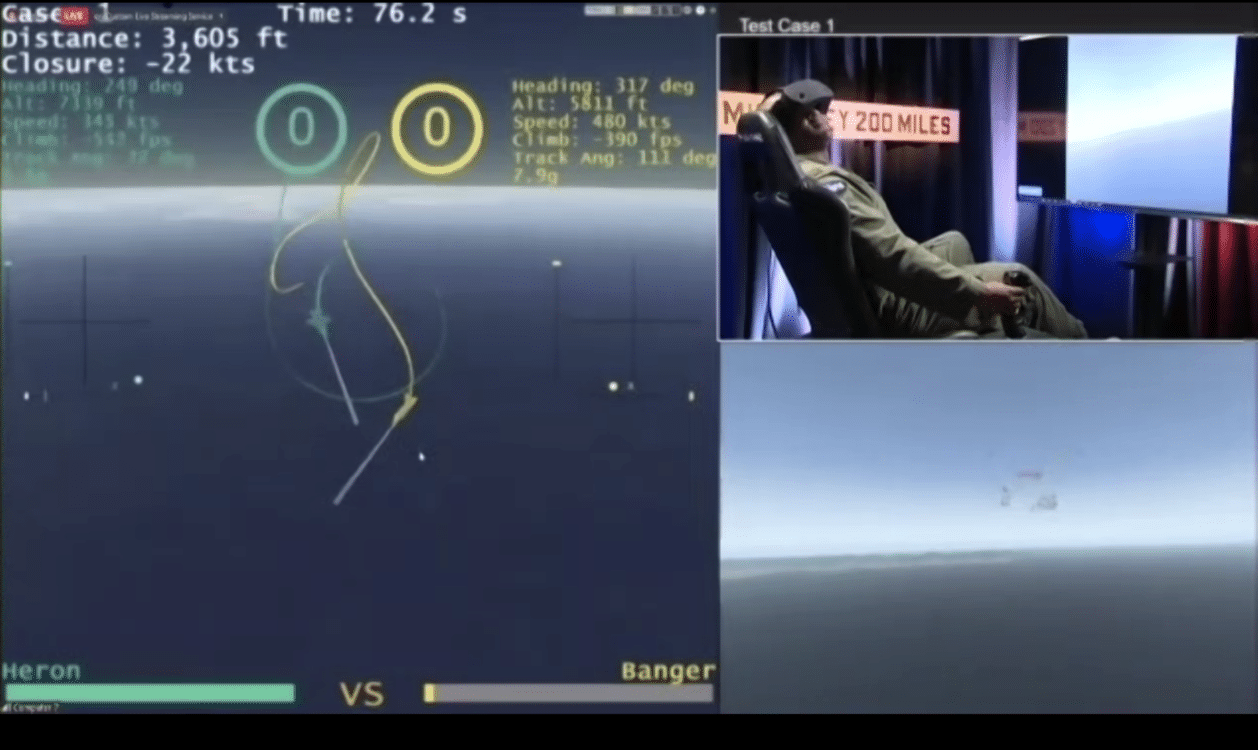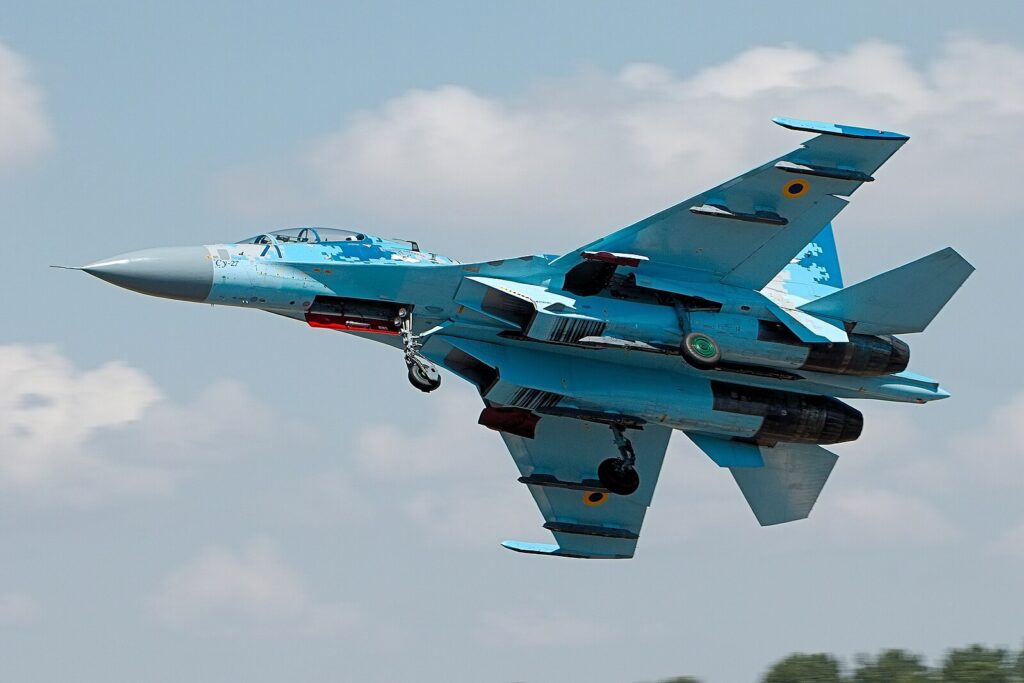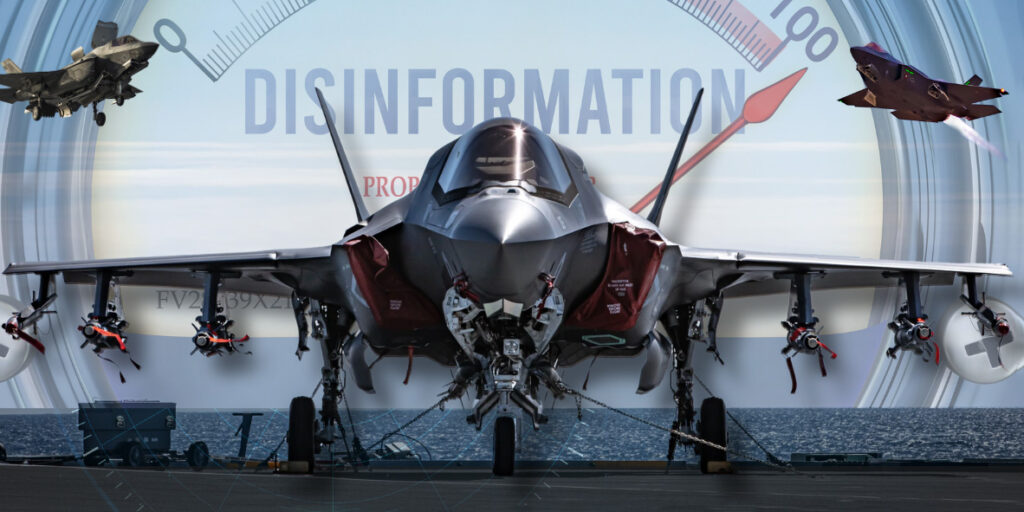Russia is testing its own ‘Loyal Wingman’ for the Su-57
- By Alex Hollings
Share This Article

According to reports released by Russia’s state-owned media outlet RIA, Russia’s S-70 Okhotnik (Hunter) uncrewed combat aerial vehicle recently completed its first “fighter-interceptor” exercise, in which the drone carried simulated air-to-air missiles while completing a series of test flights.
According to an unnamed source within the Russian military that was cited by RIA, these tests “will make it possible to assess the coupling of the drone’s avionics with missile guidance systems and the lead Su-57 aircraft.” (The source included in the link above is in Russian.)
“From the strip of the military airfield of the Center for Combat Training and Combat Use of the Russian Aerospace Forces at the Ashuluk training ground, several flights of the Hunter were performed with functional simulators of guided air-to-air missiles. Such missiles in the combat version are designed to destroy other aircraft,” the Russian military source said.

While unnamed sources are often considered questionable, the fact that these remarks were published by an entity owned and operated by the Russian government suggests these comments are not only officially sanctioned, but likely, very intentionally worded.
This effort sounds a great deal like a number of programs already in progress for the United States and its allies. Boeing is working with the Australian Air Force on their “Loyal Wingman” program, which aims to couple crewed fighter platforms with drones equipped with artificial intelligence. The U.S. Air Force Research Laboratory also has a similar program underway in the more ominously named “Skyborg” initiative.
Both of these programs hope to use artificial intelligence and fairly low cost (or as the Air Force puts it, “attritable”) drones to support data-fusing 5th generation aircraft like the American-sourced F-35 Joint Strike Fighter. The plan is to use these drones as not only force multipliers, but as a means for the crewed aircraft to extend its sensor range (by sending a drone out ahead), engage more targets (using drone munitions), and potentially even engage enemy aircraft on the pilot’s behalf… but that concept is a bit further reaching than the others.
Russia’s latest announcement seems to come as a direct response to Loyal Wingman and Skyborg, with Russia aiming to couple the new Hunter drone with their own (troubled but improving) stealth fighter, the Su-57 Felon. The 20-ton unmanned combat aerial vehicle (UCAV) was first introduced by Russia as their new “stealth” drone platform, though many experts pointed out that, aside from its familiar flying wing design, the drone doesn’t appear to be very stealthy at all. Issues like a lack of engine shrouding and what appears to be a decidedly non-stealthy fourth-generation fighter engine powering the platform, in particular, raised eyebrows.

While the Hunter drone does share a slight resemblance with low-observable American drones like the Northrop Grumman’s technology demonstrator X-47B or Lockheed Martin’s RQ-170 Sentinel, the clearly visible jet nozzle on the back of the aircraft would not only offer a significant radar return, it would also make direct line-of-sight infrared detection pretty easy.
It stands to reason that the Russian military may well be able to couple their Hunter drones with Su-57s in the future, but these tests carrying simulated air-to-air missiles likely don’t suggest this new drone will be a capable dogfighter quite yet. The United States, which has been running advanced drone programs for significantly longer than the Russian military, still does not have a drone that’s sufficiently capable to engage in air-to-air combat reliably and consistently — due in large part to the signal lag associated with drones being operated by distant users. This lag is one of a number of reasons Loyal Wingman and Skyborg are focused on AI.
While dogfights are increasingly rare in this era of over-the-horizon air-to-air weapons, getting into a scrap with another fighter remains among the most complex and challenging threats a fighter pilot may face. Split-second decisions mean the difference between life and death in air combat. America’s combat drones operate in a far more limited capacity, usually loitering for long periods of time in uncontested airspace and engaging ground targets. That’s not to say, however, that drones will never be used to take down enemy aircraft.

Earlier this year, a U.S. Air Force MQ-9 Reaper drone successfully engaged a drone cruise missile in mid-air using the AIM-9X precision air-to-air missile. This test demonstrated the capacity for drones to engage aerial targets, but it’s important to note that the MQ-9 wasn’t firing at a platform that would take evasive measures, deploy flares, or shoot back.
However, advances in artificial intelligence may soon make a fighter-like drone possible. DARPA’s AlphaDogfight trials held in August pitted an AI pilot against a real F-16 Fighting Falcon pilot in a head-to-head dogfight in a simulated environment. The AI swiftly mopped the floor with the highly-trained human, winning 5 bouts in a row. The test, however, was skewed in the AI’s favor in a number of important ways. First and foremost, the F-16 pilot was sitting in a chair and using what effectively amounted to video game controls and a VR headset to fly his aircraft — far from the cockpit he was accustomed to. Likewise, the virtual environment allowed the AI to be constantly aware of everything occurring within the battlespace — an advantage over the human pilot’s limited VR feedback.

None the less, the exhibition match between the human and AI pilots proved that the premise isn’t all that crazy. As these systems continue to mature, it seems likely that AI will not only find its way into support drones, but also into the cockpits of fighters as well–where it will serve as a highly capable co-pilot.
Russia’s efforts to pair their Hunter drone to the Su-57 is likely not quite as advanced as the American and Australian efforts, due in part to Russia’s stagnating economy and in part to the nation’s slow adoption of advanced combat drones. However, this, like many defense programs as of late, once again seems to demonstrate that an artificial intelligence arms race is likely already underway.
Related Posts
Sandboxx News Merch
-

‘AirPower’ Golf Rope Hat
$31.00 Select options This product has multiple variants. The options may be chosen on the product page -

‘Kinetic Diplomacy’ Bumper Sticker (White)
$8.00 Add to cart -

‘Kinetic Diplomacy’ Bumper Sticker (Black)
$8.00 Add to cart

Alex Hollings
Alex Hollings is a writer, dad, and Marine veteran.
Related to: Airpower, Military Affairs

Where do NATO reporting names come from?

The A-12 Avenger II would’ve been America’s first real ‘stealth fighter’

Why media coverage of the F-35 repeatedly misses the mark

It took more than stealth to make the F-117 Nighthawk a combat legend
Sandboxx News
-

‘Sandboxx News’ Trucker Cap
$27.00 Select options This product has multiple variants. The options may be chosen on the product page -

‘AirPower’ Classic Hoodie
$46.00 – $48.00 Select options This product has multiple variants. The options may be chosen on the product page -

‘AirPower’ Golf Rope Hat
$31.00 Select options This product has multiple variants. The options may be chosen on the product page -

‘Sandboxx News’ Dad Hat
$27.00 Select options This product has multiple variants. The options may be chosen on the product page
